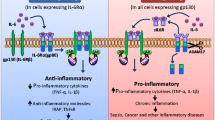Abstract
The effects of αDifluoromethylornithine (DFMO)2 on survival of human gastric cancer clones were studied in vitro. The responses were dose and time dependent. Treatments which lasted for less than 12 h were cytotoxic at only the highest doses used. The greatest effects on survival were observed only when cells were treated for 48 and 72 h. The effects on the clones produced by such prolonged treatment durations were heterogeneous, with survival values differing by as much as 460%. By contrast, the clonal survival responses to short DFMO treatments (12 h) were very uniform (dose differential of only 19%); however, this uniformity in response could be achieved only by using non-pharmacological doses of DFMO. The heterogeneity in survival responses in the clones might be slightly associated with their levels of intracellular spermidine. Clones with the smallest amounts of intracellular spermidine at the start of treatment were most sensitive to DFMO. However, this association may not hold up with further testing in other gastric cancer clones or when studied in other cancer lines in vitro.
Similar content being viewed by others
Abbreviations
- LD90 :
-
dose lethal to 90% of the cell population
- D0 :
-
dose required to reduce survival by 63% on exponential portion of the survival curve
- MeCCNU:
-
1-(2-chloroethyl)-3-(4-methylcyclohexyl)-1-nitrosourea
- Bleo:
-
Bleomycin
- 5FU:
-
5 fluorouracil
- DFMO:
-
αDifluoromethylornithine
- ODC:
-
ornithine decarboxylase
References
Barranco SC, Townsend CM, Quraishi MA, Burger NL, Nevill HC, Howell KH, Boerwinkle WR: Heterogeneous responses of an in vitro model of human stomach cancer to anticancer drugs. Invest New Drugs 1:117–127, 1983
Barranco SC, Townsend CM, Casartelli C, Macik BG, Burger NL, Boerwinkle WR, Gourley WK: Establishment and characterization of an in vitro model system for human adenocarcinoma of the stomach. Cancer Res 43:1703–1709, 1983
Barranco SC, Schlechter GA, Boerwinkle WR, Howell KA, Rubin NH: Survival and cell cycle kinetics responses of Chinese hamster ovary cells, and clones of human adenocarcinoma of the stomach and astrocytoma to diaziquone (AZQ) in vitro. Invest New Drugs 1:11–20, 1983
Jenkins VK, Barranco SC, Townsend CM, Perry RR, Ives KL: Differential response to photon radiation of human stomach cancer cells in vitro. Intl J Rad Biol, in press
Mamont PS, Duchesne M-C, Grove J, Bey P: Anti-proliferative properties of DL-α-difluoromethylornithine in cultured cells. A consequence of the irreversible inhibition of ornithine decarboxylase. Biochem Biophys Res Comm 81:58–66, 1978
Gerner EW, Glass JR, Fuller DJM: Activation of ornithine decarboxylase in monolayer cells treated with trypsin. J Cell Physiol, in press
Heby O: Cell cycle phase specificity and therapeutic effectiveness of polyamine synthesis inhibitors. In: 13th International Cancer Congress, Part C: Biology of Cancer (2), Alan R Liss, Inc, 150 Fifth Avenue, New York, pp 189–198, 1983
Koch-Weser J, Schechter PJ, Bey P, Danzin C, Fozard JR, Jung MJ, Mamont PS, Seiler N, Prakash NJ, Sjoerdsma A: Potential of ornithine decarboxylase inhibitors as therapeutic agents. In: Morris DR and Marton LJ (eds): Polyamines in Biology and Medicine, Marcel Dekker, New York, p 437, 1981
Metcalf BW, Bey P, Danzin C, Jung MJ, Casara P, Vevert JP: Catalytic irreversible inhibition of mammalian ornithine decarboxylase (EC 4.1.1.17) by substrate and produce analogues. J Am Chem Soc 100:2551, 1978
Seidenfeld J, Gray JW, Marton LJ: Depletion of 9L rat brain tumor cell polyamine content by treatment with DL-α-difluoromethylornithine inhibits proliferation and the G1 to S transition. Expl Cell Res 131:209, 1981
Gerner EW, Stickney DG, Herman TS, Fuller DJM: Polyamines and polyamine biosynthesis in cells exposed to hyperthermia. Radiation Res 93:340–352, 1983
Prakash NJ, Schechter PJ, Mamont PS, Grove J, Koch-Weser J, Sjoerdsma A: Inhibition of EMT6 tumor growth by interference with polyamine biosynthesis; effects of α-difluoromethylornithine, an irreversible inhibitor of ornithine decarboxylase. Life Sciences 26:181–194, 1979
Prakash NJ, Sunkara PS: Combination chemotherapy involving α-difluoromethylornithine and 1-β-D-Arabinofuranosylcytosine in murine L1210 leukemia. Cancer Res 43:3192–3196, 1983
Russell DH: Clinical evidence of polyamines as biochemical markers of tumor kinetics. Clin Chem 23:22–27, 1977
Manni A, Wright C: Effect of tamoxifen and α-difluoromethylornithine on clones of nitrosomethylurea-induced rat mammary tumor cells grown in soft agar culture. Cancer Res 43:1084–1086, 1983
Sano Y, Deen DF, Oredsson SM, Marton LJ: Effects of α-difluoromethylornithine on the growth of 9L rat brain tumor multicellular spheroids and their response to 1,3-Bis-(2-chloroethyl)-1-nitrosourea. Cancer Res 144:577–581, 1984
Luk GD, Goodwin G, Gazdar AF, Baylin SB: Growth-inhibitory effects of DL-α-Difluoromethylornithine in the spectrum of human lung carcinoma cells in culture. Cancer Res 42:3070–3073, 1982
Elkind MM: DNA damage and cell killing cause and effect? Cancer 56(10):2351–2363, 1985
Barranco SC, Novak JK, Humphrey RM: Studies on recovery from chemically induced damage in mammalian cells. Cancer Res 35:1194–1204, 1975
Cohen SS, Barner HD: Studies on unbalanced growth in Escherichia coli. Proc Natl Acad Sci USA 40:885–893, 1954
Abeloff MD, Slavik M, Luk GD, Griffin CA, Hermann J, Blanc O, Sjoerdsma A, Baylin SB: Phase I trial and pharmacokinetic studies of α-difluoromethylornithine — an inhibitor of polyamine biosynthesis. J Clin Oncol 2:124–130, 1984
Sagiura M, Shafman T, Kufe D: Effects of polyamine depletion on proliferation and differentiation of murine erythroleukemia cells. Cancer Res 44:1440–1444, 1984
Porter CW, Bergeron RJ: Spermidine requirement for cell proliferation in eukaryotic cells: structural specificity and quantitation. Science 219:1083–1085, 1983
Chang BK, Black Jr O, Gutman R: Inhibition of growth of human or hamster pancreatic cancer cell lines by α-difluo-romethylornithine alone and combined with cis-diammine-dichloroplatinum (II). Cancer Res 44:5100–5104, 1984
Siimes M, Seppanen P, Alhonen-hongisto L, Janne J: Synergistic action of two polyamine antimetabolites leads to a rapid therapeutic response in childhood leukemia. Intl J Cancer 28:567–570, 1981
Sunkara PS, Prakash NJ, Chang CC, Sjoerdsma A: Cytotoxicity of methylglyoxal Bis(guanylhydrazone) in combination with α-difluoromethylornithine against HeLa cells and mouse L1210 leukemia. JNCI 70:505–509, 1983
Author information
Authors and Affiliations
Rights and permissions
About this article
Cite this article
Barranco, S.C., Ford, P.J. & Townsend, C.M. Heterogeneous survival responses of human gastric cancer clones to αDifluoromethylornithine in vitro. Invest New Drugs 4, 337–345 (1986). https://doi.org/10.1007/BF00173506
Issue Date:
DOI: https://doi.org/10.1007/BF00173506




